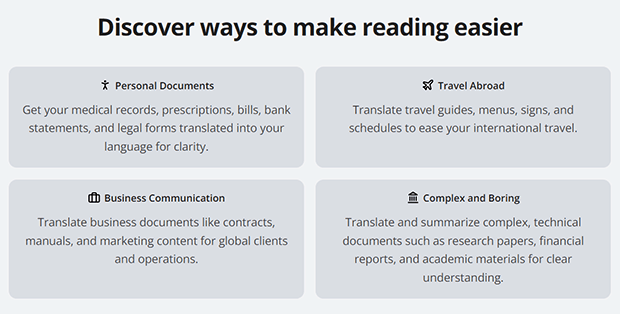
WhatLetter, an AI-powered document assistant, transcends traditional translation by offering nuanced understanding in over 30 languages, tailored for non-native speakers. Developed from the personal immigrant experience of its creator, Sepehr Fard, it empowers users to independently navigate complex documents. This tool not only breaks language barriers but also enhances cultural understanding, marking a significant step in global communication.
Introduction to WhatLetter
In the digital age, the ability to understand and interpret documents across languages is not just a convenience; it’s a necessity. Enter WhatLetter, an AI-driven assistant specifically designed to bridge language gaps in document translation. Unlike conventional translation tools, WhatLetter offers a nuanced understanding, catering specifically to the needs of non-native speakers. This innovation represents a significant leap forward, particularly in contexts where accurate interpretation of documents is crucial.
The Immigrant Experience and Language Barriers
Immigration, often a journey marked by hope, also brings with it a unique set of challenges. Among these, language barriers stand prominently, affecting immigrants’ ability to navigate new environments effectively. From comprehending legal documents to performing everyday tasks, the inability to understand the local language can lead to significant obstacles. These barriers are not just about translating words but also involve grasping cultural nuances and contextual meanings, which are often lost in traditional translation processes.
Sepehr Fard’s Personal Journey
The inception of WhatLetter is deeply rooted in the personal experiences of its creator, Sepehr Fard. Growing up in Iran and later moving to the United States, Fard found himself playing a pivotal role as a linguistic and cultural mediator for his parents. This role highlighted the intricate challenges immigrants face, particularly in understanding the nuances and intents of a language they are not native to. Fard’s journey reflects a broader narrative shared by many immigrants worldwide, where language is often a barrier to integration and understanding.
Development and Success of WhatLetter
WhatLetter’s journey from concept to reality began at Craft Venture’s HackAIthon. Here, amongst a gathering of innovative minds, the initial prototype of WhatLetter was presented. Its victory in this competitive arena was just the beginning. The true measure of success, however, was observed in its practical application – starting with Fard’s parents, who became the first everyday users of the app. This real-world validation marked a significant milestone, indicating the potential impact of WhatLetter on a global scale, especially among non-native speakers grappling with language barriers.
WhatLetter’s Unique Features
What sets WhatLetter apart is its comprehensive approach to document translation. This tool doesn’t merely translate text; it offers a deeper understanding. Users can capture a photo of any document and select from over 30 languages for translation. WhatLetter then provides insights, explanations, and clarifications, simulating a conversation. This interactive aspect ensures that users not only get the translated text but also comprehend the context and nuances. The upcoming integrations with platforms like WhatsApp and Telegram, along with additional language support, are poised to enhance its usability further.
Impact on Non-Native Speakers
The significance of WhatLetter is particularly pronounced for non-native speakers. This demographic often struggles with not just language barriers, but also the cultural and contextual understanding necessary for accurate interpretation. WhatLetter has been instrumental in easing this struggle. It offers a more intuitive and interactive way of translating and understanding documents, reducing the dependence on external help and empowering users with self-sufficiency. This empowerment is evident in the increased confidence and independence of its users, as they navigate through complex documents in foreign languages.
WhatLetter in the Global Context
In a world increasingly connected yet divided by language barriers, WhatLetter stands as a tool fostering understanding and integration. Its impact transcends mere translation, touching upon the vital aspect of cultural understanding. By providing a platform that understands and translates not just words but also the intent and context, WhatLetter contributes significantly to breaking down communication barriers. This global perspective is integral to the app’s design, ensuring it remains relevant and useful across different cultures and languages.
WhatLetter, born from a personal narrative of bridging language gaps, has grown into a powerful tool that goes beyond traditional translation. It addresses the nuances and complexities often encountered by non-native speakers, offering a solution that is as much about understanding as it is about translating. By empowering users to navigate documents in foreign languages confidently, WhatLetter is changing the landscape of language translation and comprehension. Its continued evolution, driven by user feedback and technological advancements, suggests a future where language barriers cease to hinder personal and professional growth.
Please email us your feedback and news tips at hello(at)techcompanynews.com

